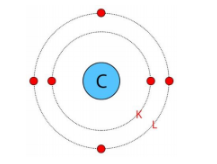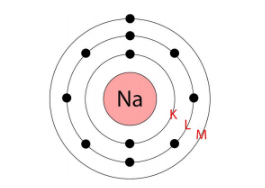NCERT Chapter 4 Structure of the Atom Class 9 Questions and Answers: FREE PDF Download






NCERT Solutions for Class 9 Science Chapter 4 Structure of the Atom

 Share
Share




















FAQs on NCERT Solutions for Class 9 Science Chapter 4 Structure of the Atom
1. Why use Solutions for Class 9 Science Chapter 4 PDF?
You can start studying Chapter 4 beforehand and prepare the syllabus for an exam efficiently. Rely on the precise answers and build your concept to stay ahead of the class. Download the NCERT Solutions PDF for class 9 science chapter 4 question answers for free and start your preparation today.
2. Why Should You Prefer the NCERT Solutions for the Structure of the Atom Class 9 questions and answers?
These answers are prepared by experienced teachers following the latest CBSE guidelines so that you can score well in the exam.
3. How can NCERT Solutions for Class 9 Chemistry Chapter 4 help you?
The format used in the answers in Structure of The Atom Class 9 NCERT Solutions will help you follow the guidelines. You will be able to give the right answers by maintaining the word count and score better.
4. What is the structure of an atom according to the class 9?
The structure of the atom class 9 question answers consist of three main particles - protons, electrons, and neutrons. The centre of an atom is called the nucleus, which consists of the positively charged protons and the no-charge neutrons. Outside the nucleus, there are electron shells that contain negatively charged electrons. Based on the number of protons and electrons, each atom shows its properties. Download the NCERT Solutions Class 9 Science Chapter 4 for similar solutions on the website.
5. Who discovered the atom according to the class 9 structure of atom question answers Science?
It was John Dalton who gave us the first modern theory of an atom and its structure. According to Dalton, atoms are indivisible and indestructible units that form matter. Atoms present in the same element are similar or identical. Atoms of different elements can vary in mass and size. Compounds are created by combining different atoms. And, the rearrangement of atoms in the presence of a reactant can cause a chemical reaction and produce a chemical product.
6. Write the names of three subatomic parts of the atom from class 9, chapter 4 science.
The smallest unit present in any matter is an atom. It contains protons, electrons, and neutrons it and these are the three subatomic parts of an atom. While protons are positively charged, electrons are negatively charged and neutrons are neutral or no charge. To know more about the topic in detail, you can visit the Vedantu website and mobile app.
7. What is Bohr's model according to Chapter 4 of Class 9 Science?
In atomic structure class 9, according to Bohr’s Model of Atom, an atom consists of a nucleus that is heavily charged (positive) due to the presence of protons. All the mass of an atom is constituted in the nucleus. Outside the nucleus, there are definiṯe orbits or energy levels that are circular - these consist of electrons. Every orbit has an exact energy amount. Whenever an electron jumps from one orbit to another, it causes a change in energy. To study more about atoms, students can download the NCERT solutions free of cost from the website.
8. What is Thomson’s model of an atom from the structure of the atom class 9 PDF?
According to J. Thompson, the model of an atom is like a Christmas pudding. It has a positive sphere, in which, embedded are the electron particles like currants on a Christmas pudding. He believed that the positive and negative charges in an atom were equal and therefore, an atom was electrically neutral. But, we know that with experiments conducted by scientists later it was proved that JJ Thompson’s model of an atom was not correct. Students can refer to class 9 science chapter 4 question answers PDF to get all the solved answers for this chapter.
9. What are the important topics from the structure of the atom class 9 question answers?
The important topics from this chapter are:
Thomson’s Model
Rutherford’s Model of the atom
Bohr’s Model of the atom
Atomic Number
Atomic Mass


 Watch Video
Watch Video





